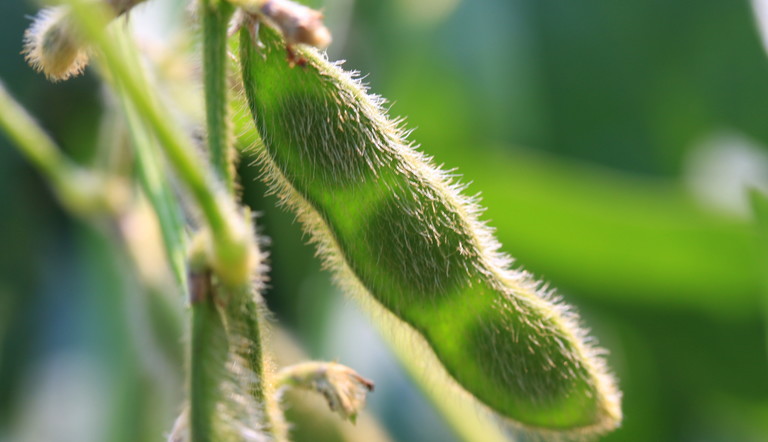
How early should growers in MB start seedbed prep for soybeans?

For Soybean Growers, Timing is Everything
Why? Because soybeans need warm soil and water in order to establish successfully.ii
According to Dave Chappellaz, Thunder Seed Canada’s Provincial Agronomist for Manitoba, soil temperature can mean the difference between a thriving crop and a struggling one. “In order to germinate, soybean seeds take in almost their weight in water during the springtime,” says Chappellaz. “But if that water is cold, you can have issues with vigor and cold stress. That’s why it’s crucial for them to have warm water and soil from the start.”
Although most agronomists recommend planting in mid- to late May, when soils reach the ideal temperature,iii soybean growers will want to get their seedbeds prepped much sooner.
Seedbed Prep: What Manitoba Soybean Growers Need to Know
To cut down on the time it takes to bring soil temperatures into the right range for planting, it’s best to start seedbed prep sooner rather than later.
Soybeans grow best in warm, dark soil with a smooth finish. Excessive trash can make soil warming and crop establishment difficult, so many growers rely on tillage, either in the fall or spring, to darken soil and hurry the process along.ii
As far as timing goes, Chappellaz encourages growers to begin seedbed prep as soon as possible, typically when the ground isn’t too cold or wet and conditions are right to begin tillage. In addition to weather considerations, he also suggests growers take into account the type of soil they have on their farm, as well as the equipment they have available.
“If you go down into the valley, where there’s a lot of clay, growers actually prep land in the fall until it’s almost ready to plant,” says Chappellaz. “That’s versus some of the areas west of Winnipeg, where there’s lighter soil. Because that soil is more prone to blowing, those guys have to do spring tillage quickly, then get their seeds in the ground.”
Chappellaz also advises looking at your equipment before deciding when to till, as some pieces of equipment are better at dealing with cold, wet ground than others, and growers who own them can get an earlier start. For instance, growers who can afford to run a cultivator or another piece of machinery over their field to speed up the warming process can actually start when the soil is still wet and cold. But for others, it may be best to hold off and wait for Mother Nature to cooperate.
When Seeding Soybeans, Patience Pays Off
Agronomists unanimously recommend that soil be at least 8-10ºC at time of planting in order for seeds to germinate successfully.iv In Manitoba, this often occurs in mid- to late May, which can feel very late, especially for a long-season crop susceptible to frost. So once the ground is prepped, some growers may be tempted to start seeding as soon as their soil hits 8 degrees.
While well-intentioned, this strategy can actually end up hurting your soybeans. Because seeds take in so much water during their first 24 hours in the ground, Chappellaz suggests you first make sure the weather will stay warm for several days before, during, and after planting.
“Over the last few years, we’ve really harped on waiting until the soil temp hits 8- 10 degrees,” he says. “But what that means is, folks will plant as soon as the soil warms, and if the weather immediately cools off again, the beans struggle.”
To combat this, Chappellaz recommends checking the weather forecast as soon as your soil hits the 8-degree mark. If the weather will remain warm for the next few days, that’s adequate time for your soybeans to start their initial growth. But if the temperatures are expected to drop in the next day or two, you’ll want to wait longer before planting.
Though this may make growers concerned with early fall frosts uneasy, experts say there’s nothing to worry about. Later-seeded soybeans are quick to catch up to their more punctual counterparts — every week later that they’re seeded only adds about two to three days to their maturity.iv
Slow and Steady Wins the Race
Because of their need for warmth and relatively long growing season, growing soybeans in Manitoba can feel like a race against time. While it’s a good idea to get the ground prepped as early as possible, it’s imperative to be patient and wait for a string of warm days to start seeding.
Now that you’ve gotten your timing down pat, it’s time to get your field ready for the 2018 growing season. For a quick refresher on all the factors that go into seedbed prep, download our Seedbed Prep Checklist here.
i. Dawson, Allan. “Three Million Acres of Manitoba Soybeans by 2022?” Manitoba Co-Operator. Online. Accessed 15 February 2018. https://www.manitobacooperator.ca/news-opinion/news/three-million-acres-of-manitoba-soybeans-by-2022/
ii. Topham, Gary. “Pulse and Special Crop Production: Q&A with Crop Production Services.” Grainews. Online. Accessed 8 February 2018. https://www.grainews.ca/columns/wheat-chaff/what-to-consider-when-plant…
iii. Dawson, Allan. “Look to More Than Calendar for Best Time to Plant Soybeans.” Manitoba Co-Operator. Online. Accessed 8 February 2018. http://bit.ly/2C76dWs
iv. Eggum, Brad. “5 Tips for Growing Soybeans in a Cool Climate.” Grainews. Online. Accessed 12 February 2018. http://bit.ly/2EDX4pT